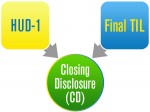2016 Real Estate Forecast


Serving South Florida


Filed under: Blog, Exclusive Buyer Agent, First Time Homebuyers, Florida Real Estate, Home Buyer Advice, Home Buyers, Home Financing, Homebuyer Advice, House Closings, Kim Around the Web, Mortgage Information, Real Estate, Real Estate Closings, real estate news, Real estate trends by Kim Bregman
Comments Off on 2016 Real Estate Forecast

The Fed’s move to lift its key rate by a quarter-point to a range of 0.25 percent to 0.5 percent ends an extraordinary seven-year period of near-zero rates that began at the depths of the 2008 financial crisis. Consumers and businesses could now face modestly higher rates on some loans.
The Fed’s action reflects its belief that the economy has finally regained enough strength 6½ years after the Great Recession ended to withstand higher borrowing rates. But the statement announcing the rate hike said the committee expects “only gradual increases” in rates going forward.
Rates on mortgages are not expected to rise much soon. The Fed’s benchmark rate doesn’t directly affect them. Long-term mortgages, for example, tend to track 10-year U.S. Treasury yields, which will likely stay low as long as inflation does and investors keep buying Treasurys.
But rates on some other loans, like credit cards and home equity credit lines, will likely rise, though probably only slightly as long as the Fed’s rate hikes remain modest.
For months, Chair Janet Yellen and other Fed officials have said they expected any rate hikes to be small and gradual. But nervous investors have been looking for further assurances.
The central bank’s target for the federal funds rate – the interest that banks charge each other – has been at a record low between zero and 0.25 percent since December 2008. At the time, Fed officials led by Ben Bernanke were struggling to contain a devastating financial crisis that triggered the worst recession since the Great Depression.
The recession officially ended in June 2009. But unemployment kept rising, peaking at 10 percent before starting to fall. The jobless rate is now at a seven-year low of 5 percent, close to the Fed’s target for full employment.
Some analysts expect the Fed to raise rates at every other meeting in 2016, for a total of four quarter-point moves. Others think that after Wednesday’s hike, the Fed could wait until June before raising rates again.
While Fed officials want to move slowly, an acceleration in inflation could force them to raise rates more quickly.
Filed under: Blog, boomerrang homebuyer, Exclusive Buyer Agent, First Time Homebuyers, Home Buyer Advice, Home Buyers, Home Financing, Homebuyer Advice, Mortgage Information, Real Estate, Real Estate Closings, real estate news by Kim Bregman
Comments Off on Feds Lift Key Interest Rate

The presumption in Florida, after July 1, 2003, is that all real estate licensees are “transaction brokers”. A transaction broker “facilitates” a transaction but doesn’t represent either the buyer or the seller as an agent. The real estate licensee is a salesperson working with a buyer or seller customer. In order for a buyer or seller to actually be represented they must enter into a written “single agent” disclosure agreement whereby the real estate licensee agrees to take on the full legal fiduciary duties of an agent and a buyer or seller agrees to have them as their agent. Then the real estate licensee is an agent and the buyer or seller is a client.
And that is the issue. Through the presumption of transaction broker, a buyer or seller has no way of knowing what it is or what they might be giving up. The real estate industry decided to keep buyers and sellers in the dark and “not knowing what they don’t know”. If there is no written disclosure alerting the buyer or seller to what transaction brokerage really is and that there is a better option, single agency, how are they supposed to know any better.
At least prior to July 1, 2008, a home buyer got a disclosure that told them, ““….parties are giving up their rights to the undivided loyalty of the licensee. This aspect of limited representation allows a licensee to facilitate a real estate transaction by assisting both the buyer and the seller, but a licensee will not work to represent one party to the detriment of the other party when acting as a transaction broker to both parties”.
But not after July 1, 2008. The requirement that a buyer or seller be given the transaction disclosure was dropped from the law. So from that time forward buyers and sellers in Florida have no idea that they aren’t being represented unless somehow they had read something about the disclosure going away in an article somewhere back in or around 2008 or a real estate licensee (and the company they are with) actually believes in providing full legal fiduciary duties to a buyer or a seller and presents them with the option of single agency and explaining it’s worth to the buyer or seller.
Fast forward to 2015 and soon to be 2016. Many of the buyers today weren’t buyers in 2008. They have no idea that the real estate licensee they are working with isn’t representing them. They just assume that they are their agent because most real estate licensees continue to act like and talk like an agent and in many cases actually perform duties and services that only an agent can legally provide. So of course a buyer is going to think that they are working with an agent.
Many other states have a “summary-like” agency disclosure which is handed to a buyer or seller before any personal information is gathered or questions asked alerting the buyer or seller of their options. The Florida Legislature in 1997 came up with one titled, “Brokerage Relationship Disclosure Act”. It provided for a Notice of Nonrepresentation disclosure. This disclosure had to be given “at first contact.”
[Florida Stat., sect. 475.276 (1)] According to the statute, the disclosure is to be given then, “. . . except in situations where a licensee knows that the potential seller or buyer is represented by a single agent or a transaction broker. If first contact between a licensee and a customer occurs during the course of a telephone conversation or any other communication in which the licensee is unable to provide the required notice of nonrepresentation, the licensee shall provide an oral notice and thereafter provide the required notice of nonrepresentation at the time of the first face-to-face contact, execution of a brokerage relationship agreement, or execution of a contractual agreement for purchase and sale, whichever occurs first.” [Florida Stat., sect. 475.276 (2)]
The effect of this disclosure was to let consumers know just where they stood with regard to the licensee they were dealing with. Also it was designed to minimize the occasions when an unintended, unauthorized, and undisclosed dual agency arose because of the behavior of the parties. Here is a copy of what that disclosure looked like back in 1997.
NOTICE OF NONREPRESENTATION
FLORIDA LAW REQUIRES THAT REAL ESTATE LICENSEES PROVIDE THIS NOTICE AT FIRST CONTACT TO ALL POTENTIAL SELLERS AND BUYERS OF REAL ESTATE.
You are hereby notified that . . . . . . . . . . . . . . . . . (insert name of brokerage firm) and I do not represent you in any capacity. You should not assume that any real estate broker or salesperson represents you unless you agree to engage a real estate licensee in an authorized brokerage relationship, either as a single agent or as a transaction broker. You are advised not to disclose any information you want to be held in confidence until you make a decision on representation. (Emphasis is mine) Your signature below acknowledges receipt of this form and does not establish a brokerage relationship.
After a consumer received the notice of non-representation, several choices were presented. If it was mutually agreeable, the licensee and the consumer would enter into a written authorized brokerage relationship of transaction broker or single agent, similar to what we have today. However, the difference was that the buyer or seller were put on notice not to say or disclose any information that they wanted kept in confidence until they had a chance to explore and accept a more formal relationship.
I suspect that the real estate industry took exception to providing true fiduciary duties that single agency required along with the legal liability that being an actual agent entails. A local real estate attorney writes in his blog, “Given all the bad acts that have happened in the Florida real estate market in recent years, having an agent with the legal duty to act as a fiduciary can make all the difference in whether or not someone who has been wronged gets compensated for their damage. It is a huge limitation on the liability of a real estate agent and their broker to be able to act as a transaction broker instead of an agent – fiduciary. How important that fiduciary duty may be to you will not become clear unless and until you are harmed. Many buyers and sellers won’t understand the possibility of having a real estate professional act as a fiduciary on their behalf until a catastrophe happens and they are meeting with a Florida real estate lawyer to try and find justice.”
Nearly all real estate companies in Florida operate as transaction brokers now and not as single agents. Single agency is rare and mostly available only through exclusive buyer agencies in Florida. Exclusive buyer agencies represent buyers only and never take listings or represent sellers. They don’t have the conflict of trying to represent buyers and sellers for the in-house transaction. Buyers Only Florida Realty is an exclusive buyer agency and we only represent buyers and never sellers. We take on the full legal liability of being an agent as noted above in the attorney’s blog.
The real estate industry really wanted a way to not be an agent at all and thus lobbied for changes passed by the Florida Legislature that took affect July 1, 2003 that brought about the “presumption of transaction brokerage” which we have today. As noted above, the “transaction brokerage” disclosure continued until July 1, 2008 when it went away. So here we are in 2015 and soon to be 2016 with buyers and sellers deliberately kept in the dark and misled by the real estate industry. It would be nice if such a true disclosure were brought back in Florida to be given to both buyers and sellers at first contact, as back in 1997, warning them not to disclosure anything that they feel is confidential and giving them a summary of their options and the consequences of each. I doubt we will ever see that again. The real estate industry seems very content with the way things are.
Filed under: Uncategorized by Kim Bregman
Comments Off on Florida Home Buyers Don’t Know What They Don’t Know…

Filed under: Blog, Exclusive Buyer Agent, First Time Homebuyers, Florida Real Estate, Home Buyer Advice, Home Buyers, Home Maintenance, Homebuyer Advice, House Closings, Real Estate, Real Estate Closings, real estate news, Relocation, western north carolina real estate by Kim Bregman
Comments Off on You Are Under Contract…What’s Next?

How concerned should investors and homebuyers be that we’re headed for another real estate crash as we approach the 10-year anniversary of the infamous 2006-2007 housing bubble? Not at all.
Although buyers are paying spectacular prices for commercial properties and trophy homes, just as they did then, this time price increases are being fueled by foreign investors seeking diversification and a haven for their funds, as well as investors on the hunt for a low interest-rate environment.
Real estate is still a favorite life raft for nervous investors, who are seeking safety amid market volatility.
This has led to record real estate prices, which some have interpreted as a sign that the U.S. real estate market is once again climbing into bubble territory and headed for another crash. But a repeat of the 2009 real estate implosion that followed the collapse of the equities market in 2008 is highly unlikely this time.
Here are the top 10 reasons why:
1. Most Americans Have Refinanced to Fixed Rate Loans
Most Americans who could refinance to a fixed-rate mortgage have already done it. As a result, the impact of interest-rate shock when short-term ARMs re-adjust will be minor, compared with what happened in 2008-2009. During that period, many Americans could no longer afford their new mortgage payments and defaulted.
2. Bank Repossessions are Flushing Out Old Distressed Properties
Bank repossessions recently rose to the highest levels in more than two years, signaling that banks are dealing with properties in default and flushing out old distress, rather than ingesting more. Foreclosure activity continues to fall.
3. Loans in Foreclosure Are at the Lowest Level Since 2007
Despite an increase in bank repossessions, the percentage of loans in foreclosure nationwide is just 2.1% — the lowest level since 2007, according to the Mortgage Bankers Association.
4. There’s Less Risk of a New Mortgage Bubble
The market is no longer fueled by a surge in new housing loans based on loose credit standards. Tighter requirements for loan approvals that followed the 2009 mortgage meltdown reduced the number of foreclosures nationwide to a 10-year low. This tempers the number of real estate bubbles that can pop and, if the market slows down, there may be a contraction, rather than a pop. New TRID requirements are further evidence of guarantying a healthy mortgage market.
5. Interest Rates Are Likely to Remain Low for the Foreseeable Future
The likelihood the Federal Reserve will raise key interest rates recently lessened, following the economic disruption coming out of China. As a result of recent market volatility around the globe, rates have not climbed as expected and the risk of higher rates has diminished for the foreseeable future. It’s also important to mention that China’s slowdown could also positively impact U.S. property values, as global funds seek relative stability in the U.S. real estate market.
6. First-Time Buyer Assistance Programs are Luring New Buyers into the Market
New initiatives have been put in place to assist prospective first-time homebuyers. At the beginning of 2015, the Federal Housing Administration (FHA) moved to reduce annual mortgage insurance premiums by up to $900 per year. This move could push home sales up to 5.6 million — the most seen since 2006- and it could introduce as many as 140,000 new buyers to the market, according to the National Association of Realtors. The FHA’s program aims to transition millennials and others from renting to owning a home.
7. Job Creation Indicates the Economy is Getting Stronger
The United States has added jobs at a steady rate over the past five years, and many of the jobs that were lost during the recession have been brought back. Additionally, the quality of jobs being created has improved as the economy has recovered.
8. Average Residential Home Prices Have Risen at a Slow, Steady Pace
Unlike the high-end, luxury market, prices for average residential homes have risen at a slow, steady pace. According to the S&P/Case-Shiller Composite 10-Home Price Index, residential home prices remained 15 percent below their April 2006 peak as of July 2015.
9. New-Home Construction Has Not Recovered from the Downturn
The supply of existing homes for sale today is lower than it was in 2000, although the population has grown more than 14%. New, single-family starts are 60% below the 2006 peak and roughly 25% below the average for the past 15 years.
10. Commercial Real Estate Remains Below Peak Levels
Commercial real-estate fundamentals are similarly healthy, and although commercial real estate prices have increased steadily since the crash, they still remain below peak levels. Vacancy rates are at or near all-time lows for apartments and warehouses, and are at their lowest post-crisis point for office and retail properties.
Commercial real-estate development also remains more than 25% below its pre-recession peak, which has led to improved property fundamentals, with both occupancy rates and rents rising.
The real-estate market today has a stronger foundation than it did in 2006, thanks to more disciplined and conservative credit underwriting of debt and a market that is much healthier than it has been at any point during the past decade.
Nearly 10 years after the bubble began, the message to investors is clear: Rest assured you are looking at a chastened and more disciplined market in which to participate — not another looming bubble.
By Chris Leavitt, Contributing Writer for The Street
Filed under: Blog, Down Sizing, Exclusive Buyer Agent, First Time Homebuyers, Florida Real Estate, Home Buyer Advice, Home Buyers, Home Financing, Home Maintenance, Homebuyer Advice, House Closings, Kim Around the Web, Mortgage Information, Real Estate, Real Estate Closings, real estate news, Relocation, western north carolina real estate by Kim Bregman
Comments Off on 10 Reasons Why Another Real Estate Crash is Unlikely Today

You searched for homes over the course of months or even years. You endured a series of offers and counter offers, property disclosures, inspections, loan applications, due diligence, and packing. Finally, after so much excitement, stress and anxiety, the house hunt has come to an end. But the story isn’t over yet. Here are some next steps to consider before you actually move in.
Filed under: Blog, Down Sizing, Exclusive Buyer Agent, First Time Homebuyers, Florida Real Estate, Home Buyer Advice, Home Buyers, Home Maintenance, Homebuyer Advice, House Closings, Real Estate, Real Estate Closings, Relocation, western north carolina real estate by Kim Bregman
Comments Off on What You Should Do After Closing

In addition to a down payment, you will also have to have sufficient cash on hand to pay for closing costs. The person purchasing the home pays usually closing costs, but with some mortgages (VA for example) the seller can pay closing costs. A little-known fact is that a big part of costs and fees actually go to third parties who process the mortgage, as well as local governments as taxes.
The average closing costs percentage is usually about 2-5% of the purchase price. But all cash buyers may end of paying less and high risk buyers getting a loan may end of paying more.
As an informed mortgage customer, you should make your mortgage banker walk you through each cost, and explain in detail what you are paying. Lenders are required to give you a Good Faith Estimate.
It is advisable that you fully understand the total cost of purchasing a home in advance of finalizing a contract. State laws and fees will vary depending on the practice and real estate law within the state. Here’s a breakdown of the most common closing costs and fees with a rough estimate of average cost:
Appraisal :($200-$600) – This is paid to the appraisal company to confirm the fair market value of the home.
Buyer’s Attorney Fee: (not required in all states – $400 and up)
Lender’s Attorney Fee: (not required in all states – $150 and up)
Escrow Deposit for Property Taxes & Mortgage Insurance: (varies widely) – Often you are asked to put down two months of property tax and mortgage insurance payments at closing as a requirement by the lender.
Credit Report: (up to $50) – A Tri-merge credit report is pulled to get your credit history and score. You cannot supply your consumer pulled report and the scores pulled form the internet from any place other than myfico.com are not real scores nor are they accurate.
Closing Fee or Escrow Fee :(generally calculated a $2.00 per thousand of purchase price plus $250 – $500) – This is paid to the title company, escrow company or attorney for conducting the closing. The Title Company or escrow oversees the closing as an independent party in your home purchase. Some states require a real estate attorney be present at every closing.
Home Owners Association Transfer Fees – The Seller will pay for this transfer which will show that the dues are paid current, what the dues are, a copy of the association financial statements, minutes and notices. The buyer should review these documents to determine if the Association has enough reserves in place to avert future special assessments, check to see if there are special assessments, legal action, or any other items that might be of concern. Also included will be Association by-laws, rules and regulations and CC & Rs. The fee for the transfer varies per association, but generally around $200-$300.
Title Company Title Search or Exam Fee (varies greatly) – This fee is paid to the title company for doing a thorough search of the property’s records. The title company researches the deed to your new home, ensuring that no one else has a claim to the property.
Survey Fee (varies greatly) – This fee goes to a survey company to verify all property lines and things like shared fences on the property. This is not required in all states but will be required if you are getting a loan. The cost will depend on if an existing survey exists, if there have been additions or deletions to the property since it was last surveyed, the size and complexity of the property, et. al.
Courier Fee (up to $50) – This covers the cost of transporting documents to complete the loan transaction as quickly as possible.
Lender’s Policy Title Insurance: (Calculated from the purchase price off a rate table. Varies by company) – This is insurance to assure the lender that you own the home and the lender’s mortgage is a valid lien. Similar to the title search, but sometimes a separate line item.
Loan Application Fee: (Varies by lender) A fee charged to process an application for a loan, such as a home mortgage from a lender or mortgage broker.
Owner’s Policy Title Insurance: (Calculated from the purchase price off a rate table. Varies by company) – This is an insurance policy protecting you in the event someone challenges your ownership of the home.
Transfer Taxes :(varies widely by state & municipality) – This is the tax paid when the title passes from seller to buyer.
Recording Fees: (varies widely depending on municipality) – A fee charged by your local recording office, usually city or county, for the recording of public land records.
Processing or Loan Origination Fee :(varies by lender) – This goes to your lender. It reimburses the cost to process the information on your loan application.
Underwriting Fee: (varies by lender) – This also goes to your lender, covering the cost of researching whether or not to approve you for the loan.
Loan Discount Points: (often zero to two percent of loan amount) – “Points” are prepaid interest. One point is one percent of your loan amount. This is a lump sum payment that lowers your monthly payment for the life of your loan.
Pre-Paid Interest :(varies depending on loan amount, interest rate and time of month you close on your loan) – This is money you pay at closing in order to get the interest paid up through the first of the month.
Private Mortgage Insurance: If your down payment is less than 20%, the lender may require that you purchase this insurance to protect them from repossessing and selling the home for less than the loan value.
Property Taxes: proration depending on what has been already paid or is owed by the Seller:
Wood Destroying Pest Inspection and Allocation of Costs: – If required by the lender or buyer, the inspection generally runs up to $125.00
Last, but not least, you probably will get your own home inspection to verify the condition of a property and to check for home repairs that may be needed before closing. These inspections can include general inspection, RADON testing, seawall, pool and roof inspections, Chinese drywall, mold and more.
Closing costs and fees are part of a mortgage, and knowing what they are and how much they should be is a good idea. This will put you in a position to challenge a cost or fee that seems exorbitant. Even if everything is correct, you have the right to ask, and your mortgage company has the duty to explain — in detail — each and every closing cost and fee.
Filed under: Blog, Exclusive Buyer Agent, First Time Homebuyers, Florida Real Estate, Home Buyer Advice, Home Buyers, Home Financing, Homebuyer Advice, House Closings, Mortgage Information, Real Estate, Real Estate Closings, Relocation by Kim Bregman
Comments Off on Residential Real Estate Closing Costs and Fees

So, you’re moving to a new home. Congratulations! Whether you’re traveling across town or across the country, here are some tips for making moving day as easy and stress-free as possible for the entire family, including your beloved pets.
For long-distance moves, make sure you give your pet potty breaks and fresh water whenever you stop for a break yourself. Make sure pets are leashed at all times during potty breaks.
Filed under: Blog, Exclusive Buyer Agent, First Time Homebuyers, Florida Real Estate, Home Buyer Advice, Home Buyers, Homebuyer Advice, Kim Around the Web, Real Estate, Real Estate Closings, Relocation, western north carolina real estate by Kim Bregman
Comments Off on Tips For Moving With Pets

On November 13, 2013, the Consumer Financial Protection Bureau issued a rule regarding changes to current early disclosure and closing documentation used on mortgage loan transactions. Anyone in the real estate or mortgage industry should understand that new regulations called TRID (TILA/RESPA Integrated Disclosures) and how they will have an impact on the timing and notifications required throughout the closing process.
But what does TRID mean for you as a homebuyer? If you have previously bought or sold a home, you’ll see two main changes: forms and closing deadlines.
Forms. The Truth-in-Lending Statement and Good Faith Estimate will be replaced by a new Loan Estimate. The Final Truth-in-Lending Statement and HUD-1 documents will be replaced by the Closing Disclosure.
These forms have been changed to provide the buyer with a clearer picture of the costs involved with mortgage financing, and to give the buyer more time to review and accept these terms. These changes originate from the CFPB (Consumer Financial Protection Bureau) as part of the Dodd-Frank Act. The standard real estate contacts are changing as well to reflect the dates and timing of obtaining a loan.
What is most important is the impact on the time it may take to schedule a closing under these new rules. Buyers must receive and acknowledge their Closing Disclosure at least 3 business days prior to the closing. This will require more coordination and communication between agents, closing attorneys and lenders to ensure this takes place. It is very important to make sure you are working with an informed team of agents, closing attorneys and lenders in order for the process to go as smoothly as possible.
Keep these three primary areas in mind while preparing yourself for the home buying process if you are planning on getting a mortgage:
The homebuyer will be receiving new disclosure forms from lenders explaining the loan estimate and loan closing. The Loan Estimate form combines the Good Faith Estimate (GFE) and the Truth in Lending Disclosure into a shorter form that should be easier to understand and explains the mortgage loan’s key features, costs and risks at the beginning of the mortgage process.
Under TRID, a lender cannot impose any fee, except a reasonable fee for obtaining a consumer’s credit report, on a consumer until the consumer has received the loan estimate and has indicated intent to proceed. This should make it easier for a consumer to shop for and understand interest rates, but it might take lenders longer to preapprove someone because they are going to be extra careful when collecting and reviewing borrower information.
The Closing Disclosure form combines the final Truth-In-Lending statement and the HUD-1 settlement statement into a shorter form that should be easier for the consumer to understand and provides a detailed account of the entire real estate transaction, including terms of the loan, fees and closing costs.
This disclosure might transform the closing table from a nightmare experience with piles of documents to review for the first time into a more manageable, slightly bad dream of reviewing the information ahead of time.
With more information provided by the lender before the closing date, the various roles held by the lender and title company at the closing table might change. Stay tuned.
2. The disclosures must be provided within a specific time frame — or else.
Lenders must provide the Loan Estimate form to consumers within three business days of applying for a loan – which means three business days after the consumer provided the lender with their name, income, Social Security number, property address, property value estimate and mortgage loan amount sought.
The Closing Disclosure form must be provided at least three business days before loan consummation (the time the consumer becomes contractually obligated to the mortgage, which is usually at closing).
Any significant changes to the loan terms (the annual percentage rate (APR) becomes inaccurate, the loan product changes or a prepayment penalty is added) will restart a new three-business-day waiting period. Both the Loan Estimate and Closing Disclosure forms can be delivered in person, by mail or electronic delivery.
3. The closing process will be impacted this in the months to come.
The TRID rules apply only to loan applications received after Oct. 3. Lenders will be extra careful and hesitant after this date, while providing mortgages so as not to be out of compliance with the new rules. This will most likely translate to longer timelines to get a mortgage and will delay closing dates.
This, in turn, will impact the tight timelines around moving into a home while consumers are also coordinating assets, move-in dates, time off of work and so on.
Plan for extra time to close while everyone tests out the new system and becomes familiar with new regulations and how to work together and train staff. If you are a Buyer, look for agents, attorneys and lenders that are using electronic disclosures and e-signatures. This will dramatically shorten the loan process by almost two weeks as compared with those that are relying on the US Mail.
Many common real estate practices that you have experienced in the past will be more difficult or even impossible after October 3. Critical issues like dates per the sale agreement and how changes to the deal will impact timing may cause delays because of the three-day rule and the requirement that lenders now prepare the CD. The need for Title companies and real estate agents to submit information much earlier in the process will definitely add more hurdles to jump over to close a transaction.
In my opinion, CASH transactions, will carry a much higher level of negotiation leverage for the next several months until this process becomes the norm.
Filed under: Blog, boomerrang homebuyer, Down Sizing, Exclusive Buyer Agent, First Time Homebuyers, Florida Real Estate, Home Buyer Advice, Home Buyers, Home Financing, Homebuyer Advice, House Closings, Mortgage Information, Real Estate, Real Estate Closings, Relocation, western north carolina real estate by Kim Bregman
Comments Off on TRID: What it means for you as a Homebuyer

This year is already shaping up to be the year of the boomerang buyer, or the repeat homebuyer. As it is now seven years since the housing crash, there are many buyers who experienced a financial hardship in the recent past who are getting back into the market to purchase a home again in 2015.
There were several changes recently to the waiting periods when a buyer or homeowner can obtain a new mortgage and repurchase a home again after a foreclosure, short sale or bankruptcy. Borrowers today essentially have three options when it comes to obtaining financing to purchase a home. In fact, more than 9 out of 10 mortgages are either funded by Fannie Mae/Freddie Mac, the FHA or VA. So, if you are looking to purchase and need financing, it is more than likely you will be using one of these three financing options and it is important to know the current waiting periods when you can repurchase after a hardship.
After Foreclosure:
After Short Sale:
After Bankruptcy:
What if you don’t fit into these rules?
There are new mortgage options available for borrowers who do not fit these more traditional mortgage options above. Portfolio lenders are stepping in to provide mortgage options for buyers who cannot qualify for conventional, FHA and VA financing, and with terms much better than private financing.
There are lenders who will provide financing for buyers less than six months out of a foreclosure, short sale or bankruptcy. Of course, this does not come without a price. You need a larger down payment and rates will be higher than traditional loans.
Another part of the puzzle to helping you get in a position to repurchase again is ensuring you have also started to re-establish your credit since the financial hardship.
For example, even though the required timeline of say two or three years may have passed so you can qualify for conventional or FHA financing again, it is important you have also started to rebuild your credit and have the required credit scores to qualify again for financing. The FHA and VA only require a 580 credit score to repurchase again.
The first step is to get a copy of your credit report to verify if the financial hardship or discharge is reporting correctly and to also see what your scores are.
You can go to www.annualcreditreport.com to get a free copy of your credit report (consumers are allowed one free credit report per year).
Then the next step is to start rebuilding your credit scores.
Filed under: Blog, boomerrang homebuyer, Down Sizing, Exclusive Buyer Agent, First Time Homebuyers, Florida Real Estate, Home Buyer Advice, Home Buyers, Home Financing, Homebuyer Advice, House Closings, Mortgage Information, Real Estate, Relocation by Kim Bregman
Comments Off on 2015 – The Year of the Boomerang Buyer
 Kim N. Bregman
Kim N. BregmanAll information is provided by the licensed REALTOR®/Broker/Agent. This information is not verified for authenticity or accuracy and is not guaranteed. This website is not responsible or liable in any manner for any content posted herein or in connection with our services. Information is not guaranteed and must be confirmed by the end user.
Copyright © 2024 OPTIMA PROPERTIES. All Rights Reserved. Privacy Policy | Intellectual Property Rights | Sitemap | Real Estate Website Design & Internet Marketing by Agent Image